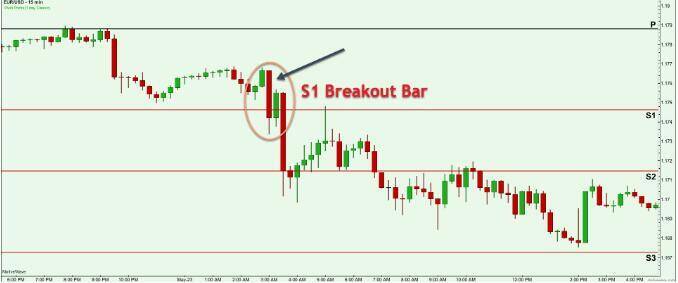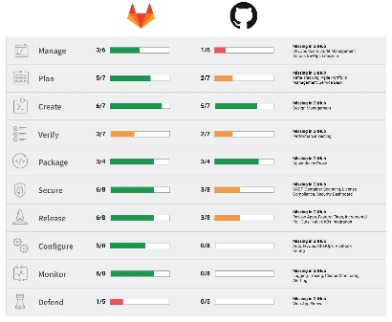Contents:

Conversely, information is valuable and useful to the researcher because it is presented in the given context and so readily available to the researcher for use. While data is an unsystematic fact or detail about something, information is a systematic and filtered form of data, which is useful. In this articl, you can find all the important differences between data and information.
What is the concept of data and information in computer?
In computing, data is information that has been translated into a form that is efficient for movement or processing. Relative to today's computers and transmission media, data is information converted into binary digital form. It is acceptable for data to be used as a singular subject or a plural subject.
After processing, what you get as output is the information. If we talk in the term of reliability, then obviously the information wins on this. The information is reliable as it conveys some meaning and there are proper organization and dedication to a single context. Information is seen as Language, ideas, and thoughts that are based on the data.
Trends In Master Data Management
Modem rules, regulation and law requires every transaction to happen in a written form, may be an agreement, application, voucher, bill, letter, memo, order etc. Paper files require a high amount of storage space and paper storage creates several other problems like fire risk, spoilage and deterioration by way of aging microorganism and humidity etc. In modem days information is needed to run man’s own livelihood to run a system or process or to command a business.
We often use the words “data” and “information” interchangeably in our daily conversations. This is because these two terms are deeply interrelated to each other. Data can be defined as a collection of individual facts with no significance on their own, we can think of it as a raw form of knowledge. When these facts are processed, they can be organized and interpreted into a thought which we call information. These two can be used together to identify and solve many problems in different fields of study. The most noticeable difference between data and information is that information provides context through interpretation, processing, and organization.
Information can’t exist without data but data doesn’t rely on the information. Large amounts of machine data related to network operations are generated by servers, firewalls, networking monitoring, and other parts of your environment. Instead, leverage the data to understand when your customers are likely to contact you and their preferred methods of contact. The final difference we can consider is that data and information are easily transferable while transferring knowledge requires learning.
Data vs. Information – Differences in Meaning
Information is significant, however, the data is insignificant. It is a product and a collection of data that together contain a logical meaning. For example, if you have got a form on your official website that asks “How are you doing?”, the comments of your visitors represent qualitative data. The quantity of visitors who complete the form, on the other hand, is quantitative. Centralizing lead and customer data in a CRM is one approach to guarantee your firm maintains it properly.
- In other words, data has no specific purpose and is meaningless in itself.
- Data is the raw recording of anything and everything that can be observed – locations, prices, temperatures, re-tweets, weights, expenditures.
- For example, if you have got a form on your official website that asks “How are you doing?”, the comments of your visitors represent qualitative data.
- For example, we can describe the scores of each individual student’s test paper as data.
- It may be obtained from numerous sources like newspapers, the internet, television, people, books, etc.
You would likely start by adding some labels to the rows and columns. You might want to filter or sort by one of the attributes, or pull in supporting difference between data and information from other sources. Then you could decide to do operations, like calculating differences or averages. Maybe you even create visualizations with charts or graphs so you can easily see trends and outliers. In conclusion, the difference between data and information is vital in today’s world where the amount of data being generated is growing exponentially.
Difference Between Data and Information Explained
Context and correlation are important in order to reveal insights. Data analytics platforms and technologies that have the capability of synthesizing data of different types are important in order to get the best insights. But if we say about data, as data is raw and is meaningless so it is useless in decision making. You can not make a decision on the basis of raw facts and figures. And if you do so, then there is a high priority that the decision may be wrong as it will rely on assumptions. It provides context to the data and enables decision making.

Data can be something simple and seemingly random and useless until it is organized. When data is processed, organized, structured or presented in a given context so as to make it useful, it is called information. The average score of a class or of the entire school is information that can be derived from the given data. Etymolog y “Data” comes from a singular Latin word, datum, which originally meant “something given.” Its early usage dates back to the 1600s. “Information” is an older word that dates back to the 1300s and has Old French and Middle English origins. It has always referred to “the act of informing, ” usually in regard to education, instruction, or other knowledge communication.
Programming
If we talk about https://traderoom.info/, data is represented in 0’s and 1’s patterns which can be interpreted to represent a value or fact. Measuring units of data are Bit, Nibble, Byte, kB , MB , GB , TB , PT , EB , ZB , YT , etc. Now, you will have business information systems that are designed to help organizations make important decisions via objective attainment. This system uses the resources provided in most IT Infrastructure to satiate the needs of variant entities existing inside a business enterprise. Data is what translates to establishing information followed by strategic success.
To put this in perspective and according to statistics from TechJury, by 2020, every person will generate 1.7 megabytes of data in just a second. And accordingly, collecting data without turning it into information is also pointless. It means that the information is always analyzed, whereas the data is never in the analyzed form. Once the data is analyzed, it is converted into information.
U.S. Energy Information Administration – EIA
U.S. Energy Information Administration.
Posted: Wed, 19 Apr 2023 12:03:51 GMT [source]
Therefore, John Smith, who lives in the U.K., is not the same customer as John Smith, who lives in the United Kingdom. Data and information may have the same values but differ in their creation and business usage. Information contains context, whereas data, literally, just includes entries. Information can contain data with different contents and formats and be the same thing.
Full Forms
It can range from concrete measurements to abstract statistics. Furthermore, we can categorize data into two main categories as quantitative data and qualitative data. Quantitative data take numerical forms and include prices, weights, temperatures, etc., while qualitative data take a descriptive but non-numerical form. Some examples of qualitative data include names, addresses, physical characteristics of people, etc. We can also categorize data as primary data and secondary data, especially when it comes to research.
- It is critical to understand also that there are several kinds of information that can be gathered from data.
- Every business generates data, practically at every moment, but in its raw form, it isn’t particularly useful.
- For instance, if the data is processed in a biased manner or incorrectly, the information obtained will not be useful.
- • Data does not have a specific purpose, whereas information has a purpose that is given while interpreting the data.
- Data never depends on Information while Information is dependent on Data.
Also, the interpretation or output of the data modifies with each structure and context. As a consequence, the data cannot be trusted when compared to the information. Information is the knowledge that is remodeled and classified into an intelligible type, which may be utilized in the method of deciding. In short, once knowledge end up to be purposeful when conversion, it’s referred to as info.
The analysis gives a broad figure of the overall profit or loss of the organization. Based on this analysis, the business can make decisions that will optimize the costs and profits in the best way. Datais used as input, which needs to be processed and organized in a particular way to generate an output, i.e.information. The term ‘data’ is the plural version of the Latin word ‘datum,’ which signifies the ‘thing provided’. It is also derived from the Latin word dare, which means ‘to give’. This may be observations, measurements, facts, graphs, or numbers.
The dictionary meaning of the word data is,“Facts and statistics collected together for reference or analysis”. In this article, I am going to provide a brief explanation of what data and information are. Also, you’ll get to know the key difference between the two.

Moreover, the information is based on the context that is in the alignment of data. You provide different photographs that you want to arrange in the collage as the input to the application. After providing the images, they are processed and aligned according to the chosen theme. In the end, you get a single collage image as the output from the application.
What is the difference between data and information and database?
Data is made up of small facts and information without context. If you give data context, then you have information. Knowledge is gained when information is consumed and used for decision making. A database is an organized collection of related information.
Data is meaningless, but once processed and interpreted, it becomes information filled with meaning. Data is just some measurement, let’s say we have a temperature 15F. But is it cold enough for keeping food in the refrigerator? Ultimately, the purpose of processing data and turning it into information is to help organizations make better, more informed decisions that lead to successful outcomes. Research process starts with the collection of data, which plays a significant role in the statistical analysis. We quite commonly use the term ‘data’ in the different context.
N.C. A&T-led Research Team Awarded NASA Grant for Flood … – North Carolina A&T
N.C. A&T-led Research Team Awarded NASA Grant for Flood ….
Posted: Tue, 18 Apr 2023 15:17:45 GMT [source]
For example, consider the question, “what is the temperature outside?” Data provides the basis for an answer to that question. You want to get the right information from data patterns to gain accurate insight. The blind men, in the parable above, got aspects of what makes an elephant. But the men needed to combine all their observations to understand an elephant.
The following box represents some raw data where some random characters, numbers, and words are separated by commas. Data comes in forms like numbers, figures, and statistics, while information usually comes as words, thoughts, and ideas. Data is in raw form and unprocessed and unstructured whereas information is processed and structured.
Moving Out of a Flood Zone? That May Be Risky! – Liberty Street … – Liberty Street Economics –
Moving Out of a Flood Zone? That May Be Risky! – Liberty Street ….
Posted: Thu, 20 Apr 2023 13:00:53 GMT [source]
On the other hand, data is raw and can be provided in any context. Moreover, with every context and structure the output or the meaning of the data changes. Hence, the data is unreliable when compared to Information. With meaningful data i.e Information, an organization or a business entity can make a decision.
What are 3 differences between data and information?
Main Differences Between Data and Information
Information is how you understand those facts in context. Data is unorganized, while information is structured or organized. Information is an uncountable noun, while data is a mass noun. Data is not typically useful on its own, but information is.
If you’re like most businesses, then you probably maintain records of customer-support interactions. According to a study made by IBM in 2018, over 80% of all data is dark and unstructured and this will increase to 93% by the year-end of 2020. You can’t use Data to make any statements, while information is data strung together, forming statements. Knowledge brings the ability to have a deduced conclusion using pieces of information together. Data and Information alone are not sufficient to make any predictions while knowledge prediction is possible if one possesses the required experience. Mail us on , to get more information about given services.
In this example, the original data appears to be a set of random words and numbers, separated by commas. Data is the collection of recorded values from which information can be ascertained. However, data and information contents and formats do not have to match. In any case, you use data and information very differently.
What is the concept of data and information in computer?
In computing, data is information that has been translated into a form that is efficient for movement or processing. Relative to today's computers and transmission media, data is information converted into binary digital form. It is acceptable for data to be used as a singular subject or a plural subject.















Θα πρέπει να συνδεθείτε για να σχολιάσετε